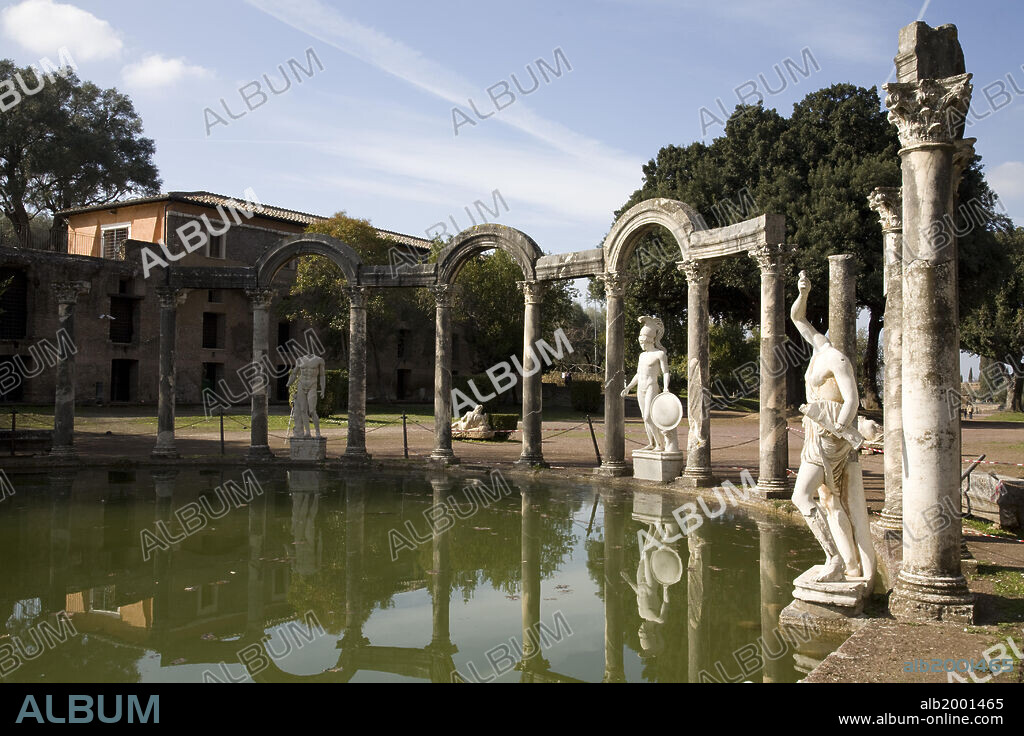alb2001465
Italy, Tivoli, Hadrian's Villa-Statues near the northern end of the Canopus Canal

|
Zu einem anderen Lightbox hinzufügen |
|
Zu einem anderen Lightbox hinzufügen |



Haben Sie bereits ein Konto? Anmelden
Sie haben kein Konto? Registrieren
Dieses Bild kaufen

Titel:
Italy, Tivoli, Hadrian's Villa-Statues near the northern end of the Canopus Canal
Untertitel:
Siehe automatische Übersetzung
Hadrian's Villa (Italian: Villa Adriana), was the luxurious retreat of Emperor Hadrian in Tibur (modern Tivoli). It was one of the most magnificent villas in the ancient world. It was built in the 2nd century AD as a home for the emperor and his court. During the later years of his reign, he actually governed the empire from the villa. The villa shows echoes of many different architectural orders, mostly Greek and Egyptian. The large Canopus pool (119 x 18 meters) was named after the canal that linked Alexandria with Canopus on the Nile delta. The statues that embellish the mixed architecture at the end of the semicircular Euripus at the northern end of the pool are Roman copies of Classical Greek original statues, larger than life size. They represent a young warrior wearing a tall helmet, the so-called "Ares" but actually Hermes, and two wounded Amazons, reproductions of the prototypes created by Polyclitus and Phidias for the Temple of Artemis at Ephesus.
Bildnachweis:
Album / Sites and Photos
Freigaben (Releases):
Model: Nein - Eigentum: Nein
Rechtefragen?
Rechtefragen?
Bildgröße:
4368 x 2912 px | 36.4 MB
Druckgröße:
37.0 x 24.7 cm | 14.6 x 9.7 in (300 dpi)
Schlüsselwörter:
2. JAHRHUNDERT • ALTE PALASTZEIT • ANTIKE • ARCHAEOLOGIE • ARCHITEKTUR • ARCHÄOLOGIE • ARCHÄOLOLGIE • AUßEN • COLUMN • DRAUßEN • GESCHICHTE • HAUPTSTADT • HORIZONTALE • IM FREIEN (ALLGEMEIN) • INNENRAEUME: PALAESTE • ITALIEN • PALAESTE • PALAIS ALLE • PALAIS • PALAST • PALAZZO • PERIODE: ROEM. KAISERREICH • PFEILER • PFUTZE • ROEMISCHES REICH • ROM, KAISERLICHES • RÖMISCHES REICH • SAEULE • STANDBILD • STATUE • SÄULE • SÄULEN • TAG • TUEMPEL • TÜMPEL • UNESCO • VIER ELEMENTE: WASSER • WASSER • WASSER, VIER ELEMENTE • WÖLBUNG • ZEITGESCHICHTE
 Pinterest
Pinterest Twitter
Twitter Facebook
Facebook Link kopieren
Link kopieren Email
Email
